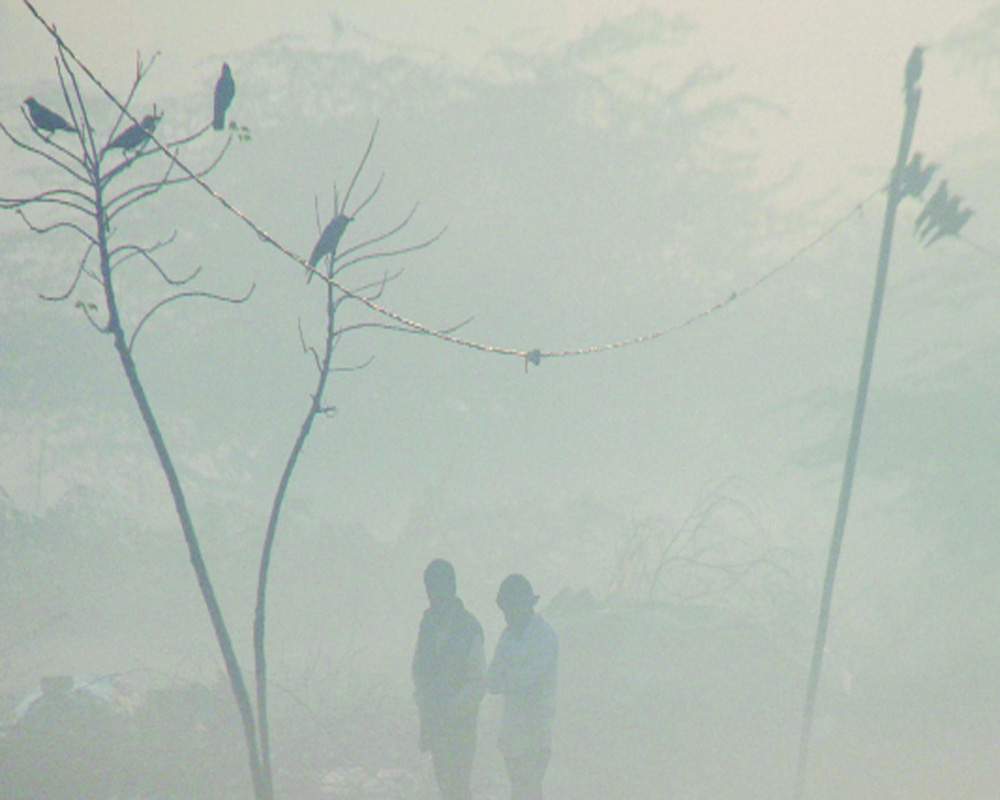Residents of Delhi faced heavy smog and poor visibility on Saturday morning as air quality plummeted back to the “severe” category, with an AQI of 412, while the maximum temperature was recorded at 29.4 degrees Celsius. Meanwhile, a thick layer of mist and smog blanketed the city during the morning and evening hours, reducing visibility.
This decline in air quality comes after a brief respite on November 22, when the AQI was recorded at 371, categorised as “very poor.” The National Capital has been logging hazardous air quality for over 20 days.
According to the Central Pollution Control Board (CPCB), which provides hourly AQI updates, 20 monitoring stations, including Alipur, Anand Vihar, Ashok Vihar, Bawana, Chandni Chowk, DTU, Dwarka, Jahangirpuri, Mandir Marg, Narela, Nehru Nagar, Patparganj, Rohini, Punjabi Bagh, Wazirpur, and Mundka, registered readings above 400, placing them in the ‘severe’ category. Nine recorded the city’s air quality in the ‘severe plus’ category with AQI exceeding 450. At the same time, IQ Air data showed AQI at 464.PM2.5 concentration recorded 59.9 times the World Health Organization (WHO) annual PM2.5 guideline value.
In nine areas of Delhi, the AQI level remained above 300 and between 400. It was 394 in Aya Nagar, 384 in Mathura Road, 397 in IGI Airport, 390 in Dilshad Garden, 388 in ITO, 394 in Jawaharlal Nehru Stadium, 398 in Pusa, and 388 in Sri Aurobindo Marg. In 27 areas of Delhi, the AQI level remained between 400 and above 500.
The AQI was 452 in Alipore, 458 in Anand Vihar, 457 in Ashok Vihar, 458 in Bawana, 422 in Burari Crossing, 440 in Chandni Chowk, 420 in Dr. Karni Singh Shooting Range, 419 in DTU, 432 in Dwarka Sector 8, 463 in Jahangirpuri, 418 in Major Dhyanchand Stadium, 418 in Mandir Marg, 443 in Mundka, 406 in Najafgarh, 437 in Narela, 448 in Nehru Nagar, North Campus 419, 401 in NSIT Dwarka, 420 in Okhla System, 426 in Patparganj, 454 in Punjabi Bagh, 430 in RK Puram, The score is 450 in Rohini, 439 in Shadipur, 406 in Siri Fort, 453 in Vivek Vihar, 467 in Wazirpur.
The AQI in Delhi-NCR’s various cities also remained high. Faridabad AQI was at 290, Gurugram was at 324, Ghaziabad at 357, Greater Noida at 295 and Noida was at 345.
According to the Air Quality Early Warning System for Delhi, moderate fog was reported at Safdarjung airport early on Saturday morning. Safdarjung airport recorded lowest visibility 300 m during 0630 hours to 0900 hours IST which improved thereafter becoming 500m at 0930 hours IST. Palam airport recorded lowest visibility 800 m during 0730 hours to 0900 hours IST which improved thereafter, becoming 1000 m at 0930 hours IST. Mainly smog conditions with wind speed less than 06 kmph variable direction prevailed over the region in the forenoon on Saturday.
The Decision Support System for Air Quality Management in Delhi pointed out that the transport sector is the most significant contributor at 16. 423 per cent. While the residential sector contribution is 4. 051 per cent, industries contributed 3. 125 per cent, construction 2. 35 per cent, energy sector 1.196 per cent, waste burning 1.469 per cent, and road dust 1.249 per cent.
The dense smog also impacted visibility, causing delays in train schedules. The Shatabdi (Kanpur to New Delhi) experienced a delay of 39 minutes, while the Jansadharan Express (Anand Vihar terminal to Danapur) faced a significant delay of 661 minutes. Other trains, including the Hazrat Nizamuddin Humsafar Express and Runicha Express, also experienced delays.
Delhi environment minister Gopal Rai inspected the Narela-Singhu border on November 22nd to monitor the implementation of GRAP stage IV.Speaking to the media, he stated: “The AAP government is continuously working to mitigate the level of pollution in Delhi. Entry has been banned for those vehicles that cause pollution, as Grap 4 is implemented. Today, we have received several complaints that vehicles are being allowed to enter Delhi without proper checking; hence I am here to inspect the same.”


























